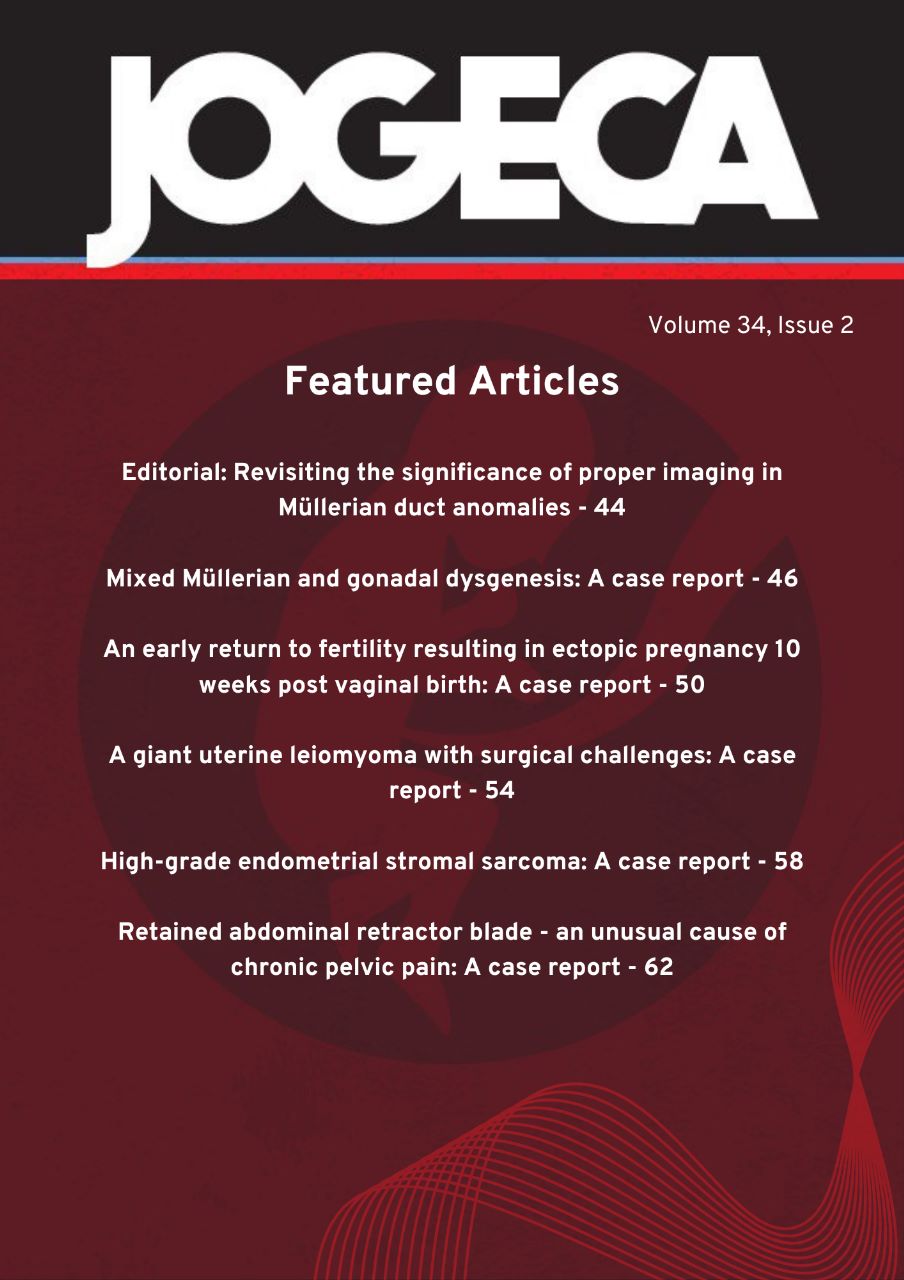FACTORS ASSOCIATED WITH TIMING OF ANTENATAL CLINIC ATTENDANCE AT MEDINA HOSPITAL, SOMALIA
DOI:
https://doi.org/10.59692/jogeca.v32i1.200Keywords:
Antenatal clinic, Timing, Medina, SomaliaAbstract
Background: Antenatal care (ANC) ensures the best health conditions for both the mother and baby during pregnancy. Globally during the period 2007-2014 only 64% of pregnant women attended WHO recommended minimum of the four contacts for ANC. Somalia lacks local data on utilization of the ANC services yet this is important in maternal and newborn healthcare planning. The aim of this study was to determine the prevalence of early versus late attendance at antenatal clinic and describe the factors associated with the specified attendance at Medina Hospital, Somalia.
Methodology: This is a comparative cross-sectional study conducted among early versus late antenatal attendees at Medina Hospital, Somalia between December 2018 to February 2019. 247 women who meet the inclusion criteria were seen at the clinic. Data was analyzed using IBM statistic SPSS version 23. Structured questionnaire was used to collect data. Statistical significance of association between variables was tested by the use of chi square or fisher’s exact test, with the T-test used to determine whether continuous data were significantly associated with late attendance.
Results: Out of the 247 women, 149(60%) attended ANC early i.e.<12 weeks and 98(40%) attended late (≥12weeks). The average age was 28.4 (SD±7.17) years. Maternal age ≥ 26 years (OR 0.39, 95% CI 0.23 – 0.69, p<0.001), higher number of residents in the household (OR 3.11, 95% CI 1.75-5.52, p<0.001), distance >5km from the nearest health facility (OR 2.85, 95% CI 1.17-6.99, p=0.022) and lack of easy access to antenatal care service (OR 4.76; 95% CI 2.17-10.5; p =0.003). were associated with late attendance.
On the contrary, urban residence (OR 3.26, 95%CI 1.33 – 0.82, p <0.001) and higher educational attainment (OR 0.40, 95% CI 0.23-0.67, p<0.001) were associated with early attendance. Although more than half of the participants were unemployed and had a monthly household income <200USD, these did not significantly influence the timing of antenatal attendance.
Conclusion: Sociodemographic and reproductive factors influence the timing of seeking antenatal care. Three key strategies that can improve uptake of early antenatal care are: health education strategies to improve health-seeking behavior, increase the number of clinics in order to enhance access and provide free maternity care.
Recommendation: Creating awareness and increasing sensitization of the importance of early attendance will help in early detection of complications and hence reduce the maternal morbidity and mortality.
Downloads
Published
How to Cite
Issue
Section
Categories
License
Copyright (c) 2020 The Authors.

This work is licensed under a Creative Commons Attribution 4.0 International License.




